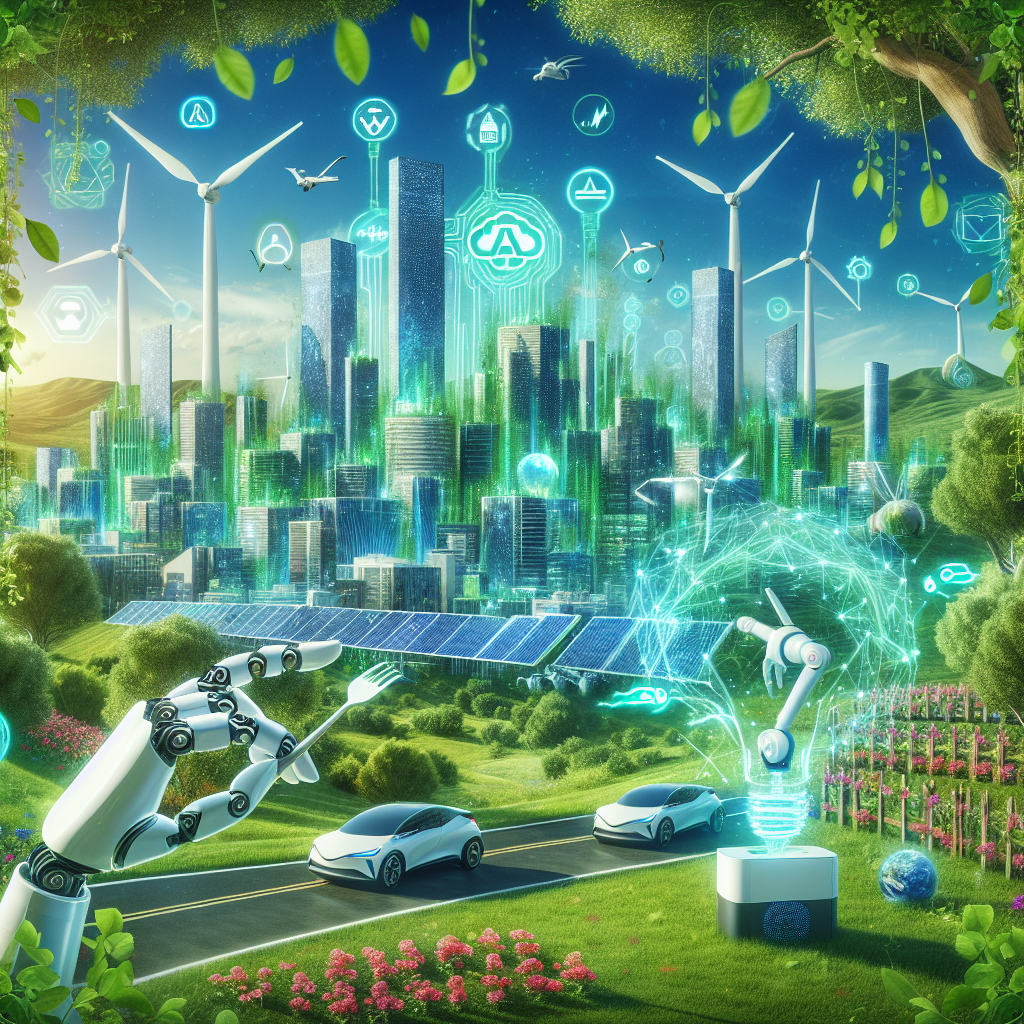The Green Revolution: How AI is Transforming Sustainability
In recent years, there has been a growing focus on sustainability and environmental conservation as the world grapples with the impacts of climate change. One of the key tools driving this movement is artificial intelligence (AI), a technology that is revolutionizing the way we approach sustainability and environmental management. From energy efficiency to waste reduction, AI is transforming the way we think about sustainability and helping us create a more environmentally-friendly future.
What is the Green Revolution?
The Green Revolution refers to a global movement towards sustainability and environmental conservation. It encompasses a wide range of initiatives aimed at reducing our impact on the environment and promoting sustainable practices. From renewable energy to waste reduction, the Green Revolution seeks to address the growing environmental challenges facing our planet.
One of the key drivers of the Green Revolution is the development and adoption of AI technology. AI has the potential to revolutionize the way we approach sustainability by providing us with new tools and insights to help us make more informed decisions about our environmental impact. By harnessing the power of AI, we can create more efficient and sustainable systems that reduce waste, conserve resources, and minimize our carbon footprint.
How is AI transforming sustainability?
AI is transforming sustainability in a number of ways, from energy efficiency to waste reduction. Here are some key ways in which AI is driving the Green Revolution:
1. Energy efficiency: AI is being used to optimize energy consumption in buildings, factories, and transportation systems. By analyzing data on energy usage and patterns, AI can identify opportunities to reduce energy waste and improve efficiency. For example, AI-powered energy management systems can automatically adjust lighting, heating, and cooling systems to minimize energy consumption without sacrificing comfort or productivity.
2. Renewable energy: AI is helping to accelerate the transition to renewable energy sources such as solar and wind power. By analyzing weather data, energy demand, and grid conditions, AI can optimize the generation and distribution of renewable energy to maximize efficiency and reduce costs. AI-powered smart grids can also help integrate renewable energy sources into existing power systems, making them more reliable and resilient.
3. Waste reduction: AI is being used to improve waste management and recycling processes. By analyzing data on waste generation, collection, and disposal, AI can identify opportunities to reduce waste, increase recycling rates, and minimize environmental impact. For example, AI-powered sorting systems can automatically separate recyclable materials from waste, making recycling more efficient and cost-effective.
4. Agriculture: AI is revolutionizing agriculture by enabling farmers to optimize crop production, reduce water usage, and minimize pesticide use. By analyzing data on soil conditions, weather patterns, and crop health, AI can provide farmers with real-time insights and recommendations to improve yields and sustainability. AI-powered drones and robots can also help monitor crops, detect pests and diseases, and perform precision farming tasks with greater accuracy and efficiency.
5. Conservation: AI is helping to protect and preserve natural ecosystems by monitoring wildlife populations, tracking deforestation, and detecting illegal activities. By analyzing satellite imagery, sensor data, and other sources of information, AI can identify threats to biodiversity and ecosystems and help prioritize conservation efforts. AI-powered systems can also help predict and mitigate the impacts of climate change on vulnerable species and habitats.
FAQs
1. How is AI different from traditional sustainability practices?
AI offers a number of advantages over traditional sustainability practices, including the ability to analyze large volumes of data, identify patterns and trends, and make real-time decisions. AI can also provide insights and recommendations that may not be apparent to human analysts, helping to optimize sustainability efforts and maximize impact.
2. How can businesses benefit from AI in sustainability initiatives?
Businesses can benefit from AI in sustainability initiatives by reducing costs, improving efficiency, and enhancing their reputation as environmentally responsible organizations. AI can help businesses identify opportunities to reduce waste, conserve resources, and minimize their carbon footprint, leading to cost savings and competitive advantages in the marketplace.
3. What are some examples of AI applications in sustainability?
Some examples of AI applications in sustainability include smart energy management systems, predictive maintenance for renewable energy systems, automated waste sorting and recycling systems, precision agriculture tools, and wildlife monitoring and conservation programs. These AI-powered systems are helping to drive the Green Revolution and create a more sustainable future for our planet.
4. How can individuals contribute to the Green Revolution?
Individuals can contribute to the Green Revolution by adopting sustainable practices in their daily lives, such as reducing energy consumption, recycling, using public transportation, and supporting environmentally friendly products and services. By making small changes to their habits and behaviors, individuals can help drive the transition to a more sustainable and environmentally conscious society.
In conclusion, AI is transforming sustainability by providing us with new tools and insights to help us make more informed decisions about our environmental impact. From energy efficiency to waste reduction, AI is revolutionizing the way we think about sustainability and helping us create a more environmentally-friendly future. By harnessing the power of AI, we can drive the Green Revolution forward and create a more sustainable and resilient planet for future generations.

